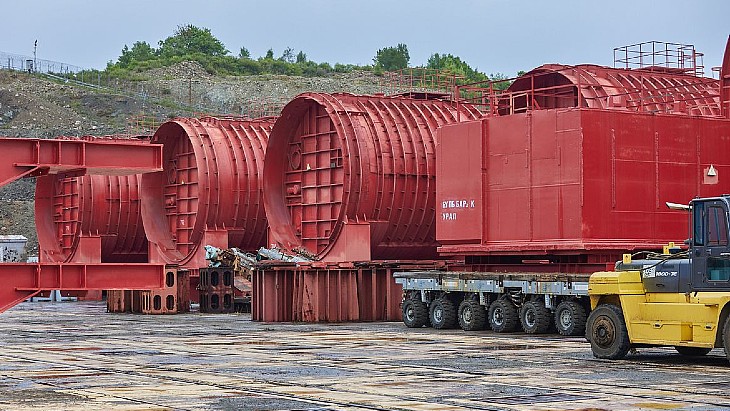Drilling begins in Canadian repository search
 Canada's Nuclear Waste Management Organisation has begun drilling the first borehole to obtain geological core samples, in its search for a potential deep repository for the long-term management of the country's used nuclear fuel.
Canada's Nuclear Waste Management Organisation has begun drilling the first borehole to obtain geological core samples, in its search for a potential deep repository for the long-term management of the country's used nuclear fuel. Canada's Nuclear Waste Management Organisation (NWMO) has begun drilling the first borehole to obtain geological core samples, in its search for a potential deep repository for the long-term management of the country's used nuclear fuel.
 |
| Borehole drilling and core sample testing has started at at Ignace (Image: NWMO) |
Drilling began on 6 November in a rock formation known as the Revell Batholith about 35 kilometres west of Ignace, Ontario. The hole is being drilled using a skid-mounted diamond drill rig. Work at the site is expected to continue for at least three months, with subsequent analysis taking about a year. Findings from the study will be reviewed by geoscience, environmental, engineering and repository safety specialists.
"The drilling of this first borehole marks an important milestone in Canada's plan for the safe, long-term management of used nuclear fuel," said Mahrez Ben Belfadhel, NWMO's vice president of site selection, said. "Reaching this next level of study is the result of several years of hard work by everyone involved and extensive collaboration with residents in the area, including First Nation and Métis communities."
The NWMO is searching for a suitable site for the repository through a long-term process called Adaptive Phase Management, launched in 2010. The process is progressively narrowing down study areas from a list of communities that registered interest. The preferred site must have a suitable rock formation in an area with an informed and willing host, and the project will only move forward in partnership with First Nation and Métis peoples and surrounding communities.
A total of 21 communities in Ontario and Saskatchewan, initially requested preliminary assessments as potential hosts. Fifteen of those areas are no longer being studied, either because they were screened out based on completed studies, or in one case - Nipigon in Ontario - withdrew. Studies continue at the six remaining areas, all in Ontario. These are: Blind River and Elliot Lake; Hornepayne; Huron-Kinloss; Ignace, Manitouwadge; and South Bruce.
The NWMO said it is working collaboratively with all communities and regions as the site section process moves forward, and expects to be able to select the preferred site for detailed site characterisation by about 2023.
Researched and written
by World Nuclear News
_17992.jpg)
_75800.jpg)







_66488.jpg)


